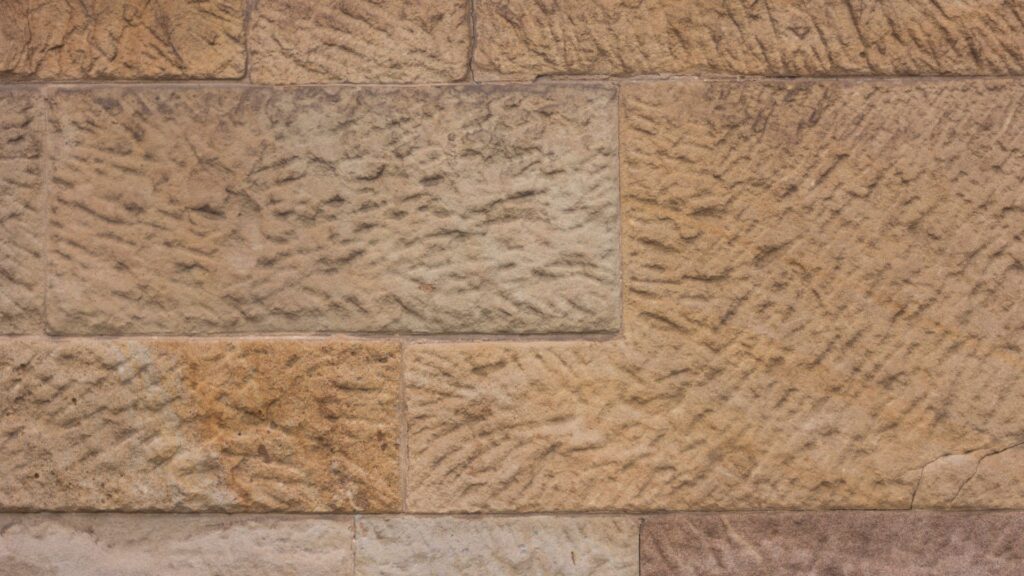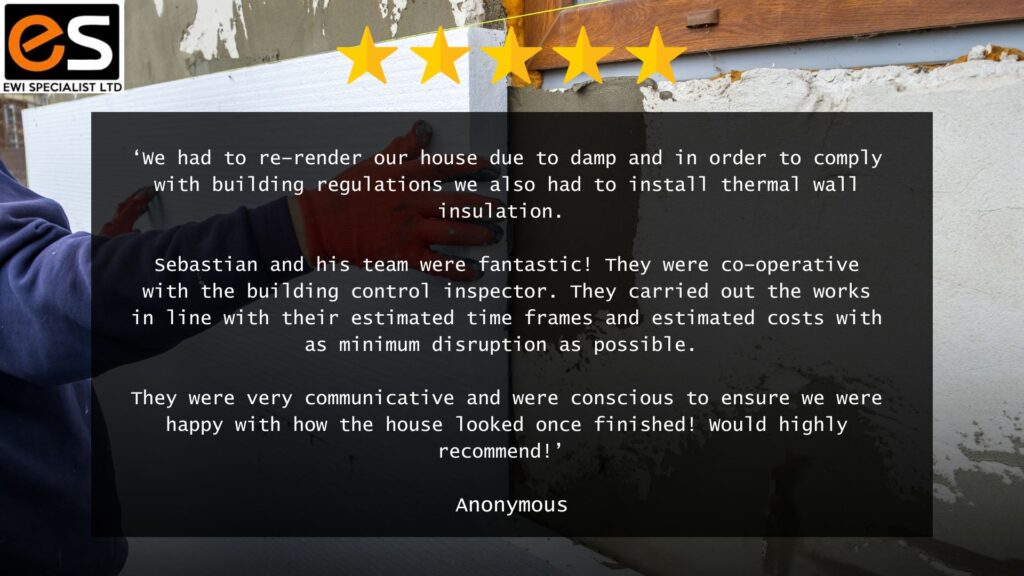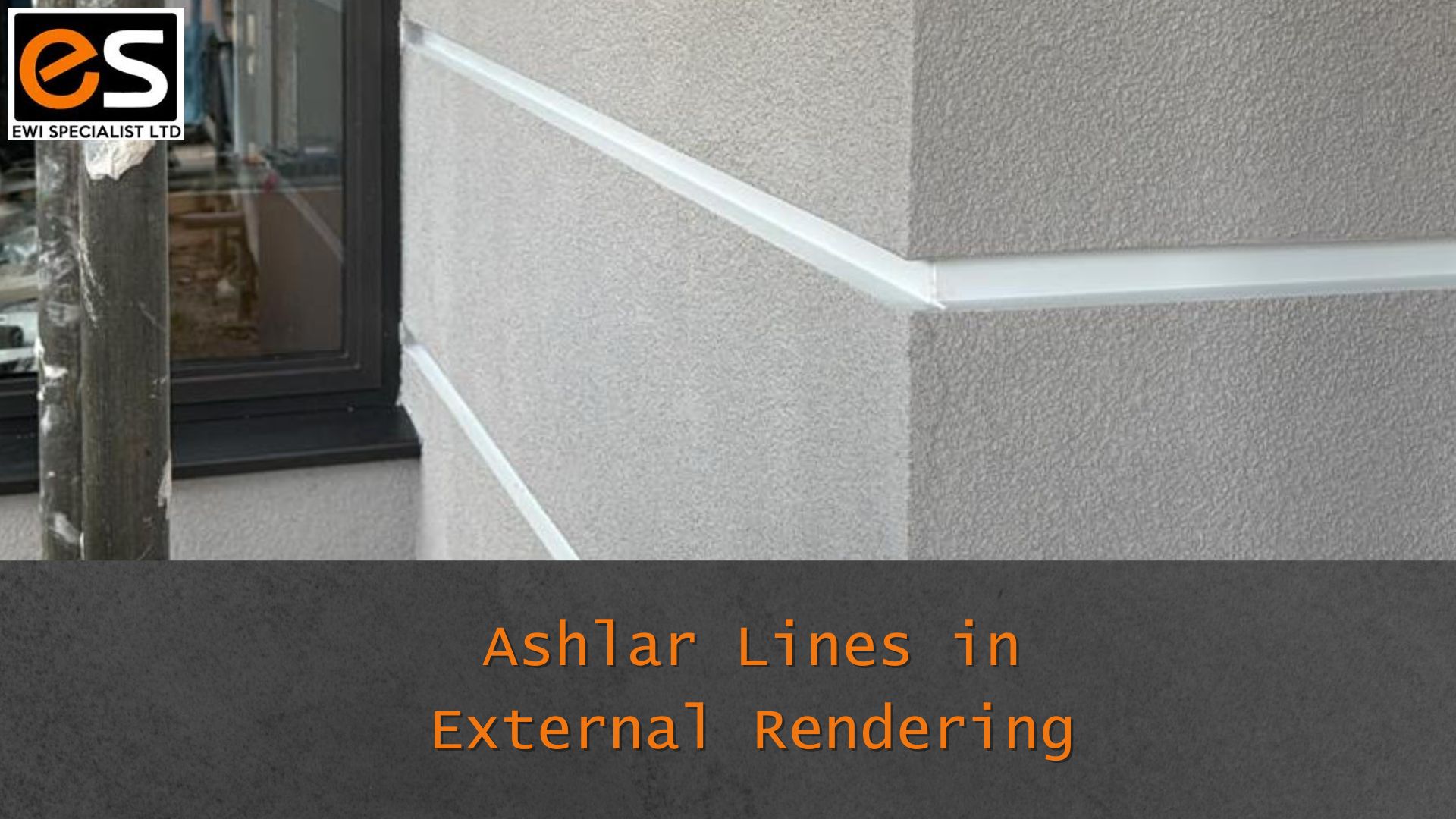In today’s blog, ‘Ashlar Lines in External Rendering’, we’re covering a detail that often gets overlooked but can make a real difference to the final look of a render job — ashlar lines.
You’ve probably seen them before, even if you didn’t know the name. They’re those clean, cut-in lines that give the appearance of traditional stone blocks. It’s a simple technique that adds a bit of character and gives the finish a more high-end look — without the cost of actual stonework.
Content Page
- Ashlar Lines in External Rendering
- Where Do Ashlar Lines Come From?
- How Are Ashlar Lines Made?
- Why Homeowners Choose Ashlar Detailing
- How to Maintain Ashlar Detailing in Render
- Frequently Asked Question About Ashlar Lines
Ashlar Lines in External Rendering
Ashlar lines are still widely used to echo the elegance of Georgian architecture, but they’ve also been adapted to suit more modern tastes — adding sharp geometry and clean separation to otherwise flat wall surfaces.
You’ll often see ashlar cuts used to break up large expanses of render, adding definition and visual structure. This makes them a smart choice for homeowners and developers looking to achieve a more architectural, textured finish — without adding major cost or complexity to the build.
Where Do Ashlar Lines Come From?
Ashlar lines — sometimes called ashlar cuts or detailing – are grooves cut into render to mimic the look of traditional stonework. They’re used to give a modern render finish the appearance of carefully laid, square-cut stone blocks.
This method dates back to the Georgian period, when real ashlar masonry was commonly used in the construction of stately homes, public buildings, and prestigious townhouses. It was seen as a symbol of elegance and wealth — associated with symmetry, clean lines, and classical architectural proportion. To recreate the appearance without the associated cost, builders began carving these lines into render, giving the illusion of solid stone blocks at a fraction of the expense.
The technique proved so effective that it’s still used today — offering a timeless, high-end look that suits both traditional and modern buildings.

How Are Ashlar Lines Made?
Traditionally, ashlar lines are cut directly into the final coat of render while it is still fresh — typically when the material has partially set, but before it fully hardens. The grooves are usually around 3–5mm deep and wide, and are made using special ashlar tools such as trowels or scribers.
An increasingly popular alternative is to use ashlar beads – thin plastic strips embedded into the render to create perfectly crisp lines. These are especially useful when a highly precise, symmetrical finish is needed. Both methods are compatible with modern render systems such as silicone, monocouche, and mineral renders, making ashlar detailing a versatile design choice for a variety of buildings and budgets.
Why Homeowners Choose Ashlar Detailing
Aashlar detailing isn’t just a throwback to traditional design — they offer real practical and aesthetic benefits that make them a solid option for any external rendering project:
Aesthetic Appeal
Ashlar detailing creates a refined, symmetrical finish that mimics expensive stonework. It adds elegance and structure to even the most modern buildings, improving kerb appeal instantly.
Cost-Effective
Instead of using real stone, ashlar detailing achieve a similar visual effect at a fraction of the cost — especially when incorporated into silicone or monocouche rendering systems.
Versatile Design Options
The patterns, widths, and spacing of the lines can be fully customised to suit the character of your property. Whether you’re going for a classic Georgian look or something more minimalist and modern, ashlar cuts can be tailored accordingly.
Widely Compatible
Ashlar detailing works with most external wall insulation and render systems — including EPS, mineral wool, and phenolic board solutions — making it a great finishing touch for energy-saving upgrades too.
How to Maintain Ashlar Detailing in Render
One of the biggest advantages of ashlar detailing is that it’s low maintenance, especially when created using modern silicone renders. These finishes are designed to be durable, weather-resistant, and breathable, helping your facade stay fresh and clean for years.
That said, here are a few easy ways to keep your ashlar detailing in great shape:
- Regular Rinse-Down – Use a garden hose to gently wash away dust, dirt, or cobwebs.
- Avoid Harsh Chemicals – Most renders are self-cleaning to an extent, but avoid using strong cleaning agents that might stain or degrade the surface.
- Check for Hairline Cracks – Although rare with proper installation, small cracks around ashlar grooves should be addressed early to avoid moisture getting in.
- Professional Touch-Ups – If your render gets damaged or discoloured, professional patch repair or re-coating can refresh the finish without redoing the entire wall.
With minimal upkeep and a quality installation, ashlar lines will continue to look sharp and protect your home for decades.
Frequently Asked Question About Ashlar Lines
1. Does ashlar detailing weaken the render?
When done properly by experienced professionals, ashlar detailing does not compromise the structural integrity of the render.
2. Are ashlar lines only used for traditional-style homes?
No. While ashlar detailing is commonly associated with Georgian and classical architecture, many homeowners use it to add clean, sharp lines or break up large wall areas. It can suit a variety of aesthetics depending on placement and finish.
3. Is ashlar detailing expensive?
Ashlar detailing is a cost-effective way to achieve a premium, stone-like finish. While it adds a bit more labour during installation, it’s far more affordable than real ashlar masonry and still delivers an elegant, upscale look.

Thinking About Adding Ashlar Lines to Your Render?
If you’re considering rendering your home and want something more unique than a flat finish, ashlar detailing is an excellent way to add definition, character, and style to your property.
If you’re not sure what would work best for your property, get in touch with our team today – we’re here to help.











